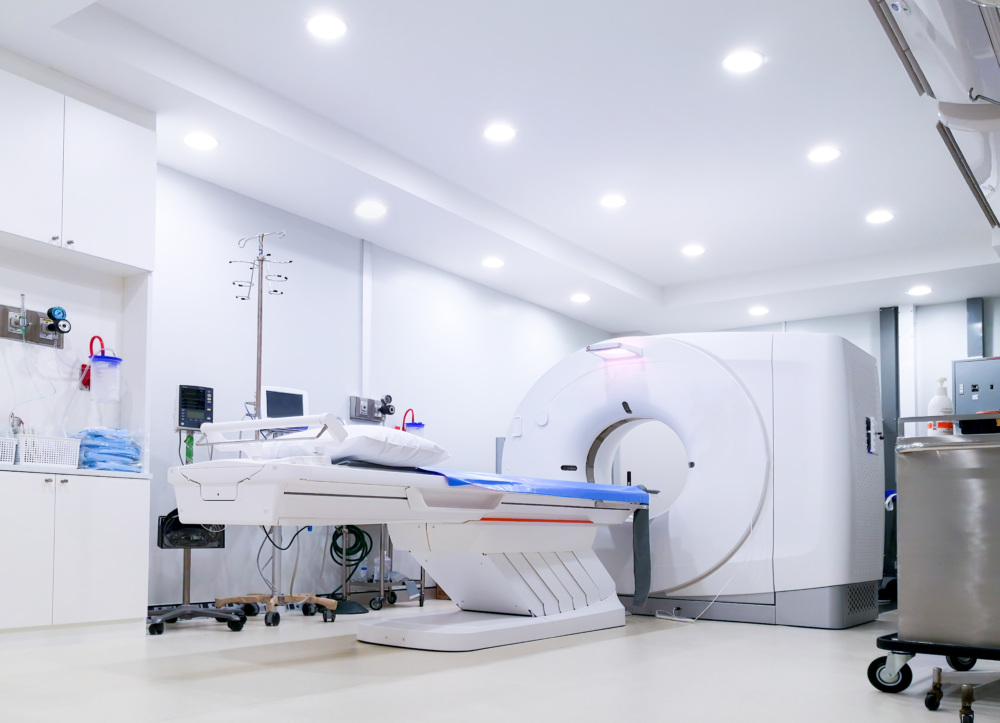What to expect during a lung cancer screening

Did you just learn you qualify for Lungenkrebs screening?
Screening is recommended for people ages 50–80 who currently smoke cigarettes or used to smoke cigarettes (and have quit within the past 15 years) and have a 20 pack-year* history.
If you are eligible for screening and getting ready for your first low-dose computed tomography (CT) scan, you may be feeling nervous. Here’s the good news: lung cancer screening is a non-invasive, painless scan. It’s quick and requires no preparation, and after the scan, you can go about your regular activities.
More good news: Lung cancer screening saves lives! Screening people who have a long smoking history significantly reduces lung cancer death—according to the American Lung Association, lung cancer screening can reduce the lung cancer death rate by up to 20% by detecting tumors at early stages when the cancer is more likely to be curable. Unfortunately, despite being a non-invasive and quick procedure, current rates in the U.S. are under 6%**—the lowest of any routine cancer screening.
Here is what you can expect when you go for your scan:
Before you arrive at the medical center or imaging center for your scan, you can take your regular, daily medications and eat as you normally would. You can wear regular clothes—though you may choose to wear clothing that is easy to take off and put on in case you are asked to change into a gown. You cannot wear metal while getting the scan, so make sure you’re not wearing clothing with zippers or other metal.
When you arrive, a radiology technician will help you get into place on the scanner table. You will be instructed to lie flat on your back and to position your hands above your head.
Once you are comfortable, the scan will begin. You may be asked to hold your breath for a few seconds at a time as the table slides you in and out of the doughnut-hole shaped CT machine. The scanner will not touch you.
LESEN SIE AUCH | I didn’t have COVID, I had lung cancer: Kim’s story

As you lie on the table, the machine will take detailed images of your lungs. A computer then combines these images into a stack of images that is later analyzed by a radiologist, who will prepare a detailed report for your care team.
Within a few minutes, you’ll be done!
LESEN SIE AUCH | 5 Mythen über Lungenkrebs
Patients often have questions about the scan. Here are some frequently asked questions and answers about lung cancer screening with low-dose CT.
Is the machine enclosed?
No. Unlike an MRI, the machine you will lie down on for a low-dose CT scan is not enclosed. This is very reassuring to people who feel claustrophobic in an MRI machine.
Is the machine loud?
No. Unlike an MRI, which can produce very loud sounds, a low-dose CT scan is extremely quiet.
Will I be given contrast dye?
You do not need contrast dye for a low-dose CT scan for lung cancer screening. That means you will not need an IV, nor will you be asked to swallow any liquids.
Will I be exposed to a lot of radiation?
A low-dose CT scan will expose you to about one-fifth the radiation of a regular CT scan.
Can I wear jewelry during the scan?
Patients need to remove jewelry and any metal before the scan.
What about deodorant or lotions?
Unlike with mammograms, which take images close to the armpits where deodorant would be applied, you can wear deodorant during your lung cancer screening. The same goes for lotions, but always follow the instructions of your health care provider and any recommendations they share prior to arriving.
When will I get my results?
Results are usually available from most medical groups and imaging centers within a couple of days. Check with your medical practice for specifics.
It’s natural to worry about getting a medical test done, especially if it’s your first time. But if your health care provider recommends you get screened for lung cancer, I encourage you to go ahead and do so. Früherkennung = bessere Ergebnisse and saves lives.
*A “pack-year history” is an estimate of how much a person has smoked over time. Multiply the number of packs of cigarettes smoked every day by the number of years smoking that amount. One pack a day for 20 years is equal to 20 pack years. Two packs a day for 10 years also equals 20 pack years.
**Source: American Lung Association
Christopher Wu, M.D., is fellowship-trained, board-certified radiologist with the Mid-Atlantic Permanente Medical Group and Kaiser Permanente.